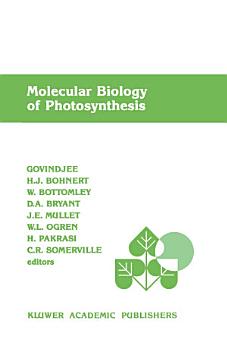Molecular Biology of Photosynthesis
Govindjee · Hans J. Bohnert · W. Bottomley · D.A. Bryant · John E. Mullet · W.L. Ogren · Himadri Pakrasi · C.R. Somerville
Dec 2012 · Springer Science & Business Media
5.0star
1 reviewreport
Ebook
844
Pages
reportRatings and reviews aren’t verified Learn More
About this ebook
Molecular biology, particularly molecular genetics, is among the newest and most powerful approach in modern photosynthesis research. Development of molecular biology techniques has provided new methods to solve old problems in many biological disciplines. Molecular biology has its greatest potential for contribution when applied in combination with other disciplines, to focus not just on genes and molecules, but on the complex interaction between them and the biochemical pathways in the whole organism. Photosynthesis is surely the best studied research area in plant biology, making this field the foremost candidate for successfully employing molecular genetic techniques. Already, the success of molecular biology in photosynthesis has been nothing short of spectacular. Work performed over the last few years, much of which is sum marized in this volume, stands in evidence. Techniques such as site-specific mutagenesis have helped us in examining the roles of individual protein domains in the function of multiunit complexes such as the enzyme ribulose-l ,5-bisphos phate carboxylase/oxygenase (RUBISCO) and the oxygen evolving photo system (the photosystem II). The techniques of molecular biology have been very important in advancing the state of knowledge of the reaction center from the photosynthetic bacteria whose structure has been elegantly deduced by H. Michel and 1. Deisenhofer from the X-ray studies of its crystals.
Ratings and reviews
5.0
1 review
Rate this ebook
Tell us what you think.
Reading information
Smartphones and tablets
Install the Google Play Books app for Android and iPad/iPhone. It syncs automatically with your account and allows you to read online or offline wherever you are.
Laptops and computers
You can listen to audiobooks purchased on Google Play using your computer's web browser.
eReaders and other devices
To read on e-ink devices like Kobo eReaders, you'll need to download a file and transfer it to your device. Follow the detailed Help Center instructions to transfer the files to supported eReaders.




